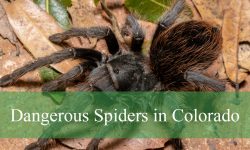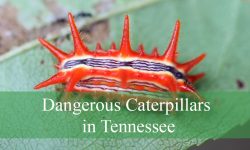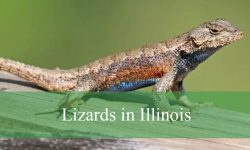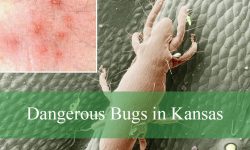Connecticut’s forests, fields, and coastlines are home to a remarkable variety of hawks that fill the skies with grace and power. These skilled hunters play an important role in maintaining healthy ecosystems by controlling small mammal and bird populations. Watching a hawk glide silently overhead is a thrilling reminder of nature’s balance.
From the familiar Red-tailed Hawk to the rare Northern Goshawk, Connecticut offers many chances to see these raptors throughout the year. Exploring different habitats like woodlands, wetlands, and open meadows increases the odds of spotting a hawk in flight or perched quietly. Each species brings its own unique beauty and behavior to the wild landscape.
This guide presents 12 types of hawks found in Connecticut, featuring clear photos and identification tips. It’s designed to help all nature lovers recognize and appreciate these impressive birds of prey.
Species of Hawks Found in Connecticut
Red-tailed Hawk (Buteo jamaicensis)
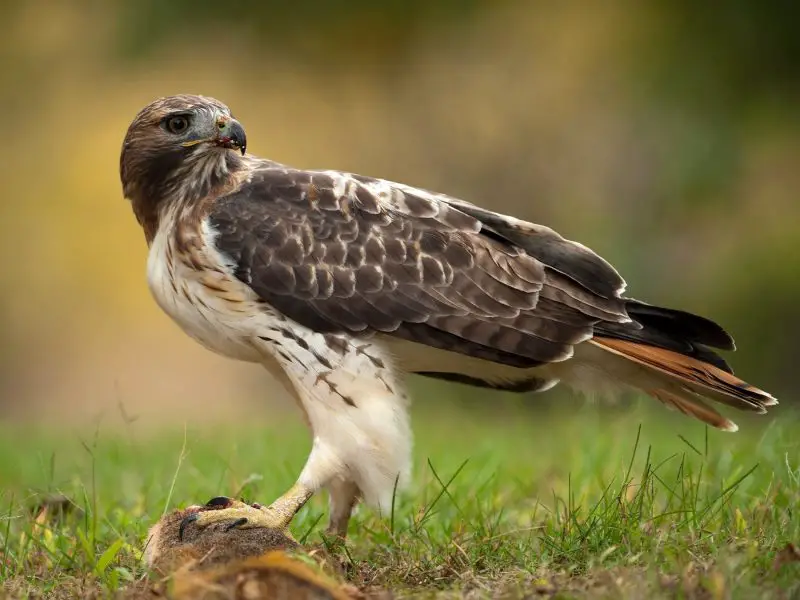
The Red-tailed Hawk is the most widespread and commonly seen hawk in Connecticut. Adults are large and broad-winged, with a wingspan of about 45 to 52 inches and a body length ranging from 18 to 26 inches. Their plumage is generally brown on the upper side with a pale underside and a distinctive reddish-brown tail that gives the species its name. Young birds, however, lack the red tail and instead show a brown, banded tail until they mature.
This species is often spotted soaring in wide circles high above fields or perched atop telephone poles and tall trees. Red-tailed Hawks are known for their iconic, raspy scream that is frequently used in movies to represent birds of prey. They are territorial and may be seen year-round in Connecticut. Their hunting behavior involves scanning the ground from a perch or soaring flight and then swooping down powerfully to capture prey.
Red-tailed Hawks are versatile predators and feed on a variety of small animals, including rodents, rabbits, squirrels, birds, and reptiles. They build large stick nests in tall trees and typically return to the same nest year after year, reinforcing it with fresh material. Pairs usually raise 1 to 3 chicks per breeding season, which fledge in 6 to 7 weeks.
A fun fact: Red-tailed Hawks mate for life and often perform aerial courtship displays involving dramatic dives and talon-grasping spins. In Connecticut, they can be seen throughout the state, from rural farmland to urban parks and even along highways where hunting perches are abundant.
Red-shouldered Hawk (Buteo lineatus)
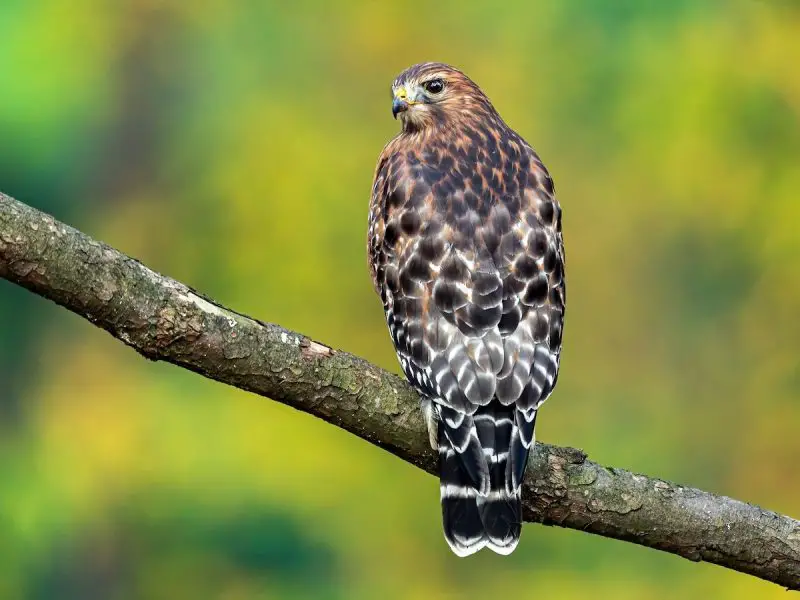
The Red-shouldered Hawk is a medium-sized hawk with broad wings and a long tail. Adults display bold black-and-white checkered wings and a warm reddish-brown chest and shoulders. Their tail is dark with narrow white bands. They typically measure 17 to 24 inches long with a wingspan of around 37 to 43 inches. Their vivid coloration and loud calls make them easy to identify in wooded areas.
This hawk species is highly vocal, emitting a loud, repeated “kee-aah” call that often gives away its presence before it’s seen. Red-shouldered Hawks are forest-dwelling raptors that favor deciduous woodlands near water sources. They glide silently through the forest canopy while searching for prey or defending their nesting territory.
Their diet consists mainly of small mammals, amphibians like frogs, snakes, and occasionally birds. They’re known for perching quietly in the woods, then dropping down suddenly to capture prey. Red-shouldered Hawks build stick nests high in trees and line them with bark, moss, or greenery. They typically lay 2 to 4 eggs, and both parents take part in raising the young.
Fun fact: Red-shouldered Hawks are known to team up with crows to drive away larger predators like Great Horned Owls, despite usually being rivals. In Connecticut, they are most commonly seen in forested regions, especially near rivers and wetlands in the central and southern parts of the state.
Broad-winged Hawk (Buteo platypterus)
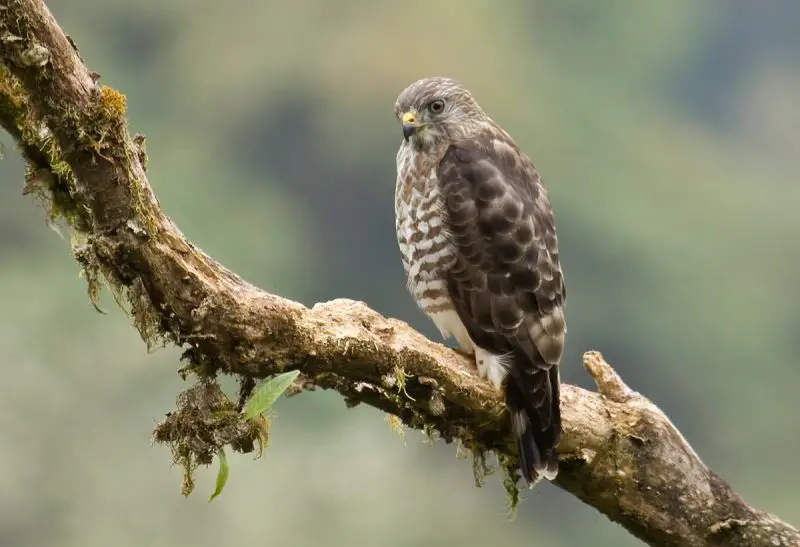
The Broad-winged Hawk is a compact buteo with short, broad wings and a relatively short tail. Adults are about 13 to 17 inches long with a wingspan of 32 to 39 inches. They have brown upperparts and pale underparts with fine horizontal barring on the chest. The tail is banded with broad white and black stripes, making it distinctive in flight.
These hawks are known for their migratory behavior and are not present in Connecticut year-round. They breed in the state during spring and summer, nesting in mature forests with dense canopies. Broad-winged Hawks are secretive during breeding season but become very visible in fall when they form large flocks called “kettles” during migration.
They feed mainly on small vertebrates such as frogs, lizards, snakes, small birds, and mammals. Their hunting strategy involves perching quietly in the forest and waiting to ambush prey. Nests are built in trees, often near a water source, and typically contain 2 to 3 eggs. Chicks fledge after about five to six weeks.
Fun fact: During fall migration, thousands of Broad-winged Hawks can be seen soaring together along ridgelines in Connecticut, particularly at popular hawk watch sites like Lighthouse Point Park in New Haven. This spectacle is one of the most anticipated birding events of the year.
Rough-legged Hawk (Buteo lagopus)
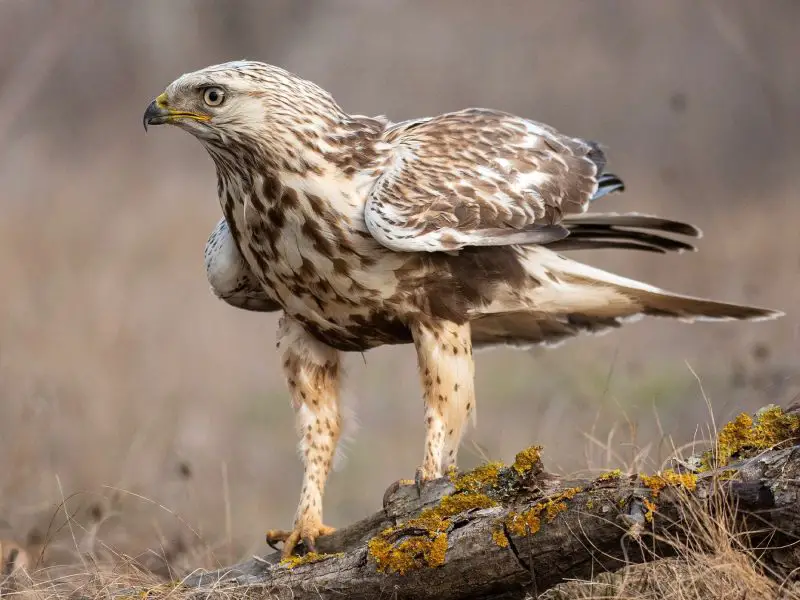
The Rough-legged Hawk is a large, long-winged raptor that visits Connecticut only during the winter months. Adults measure 18 to 20 inches long with a wingspan of 52 to 54 inches. They are recognized by their feathered legs (a feature they share only with the Ferruginous Hawk among North American hawks), pale heads, and dark belly bands. They come in light and dark morphs, with the light morphs having striking black wrist patches on the underside of the wings.
These hawks breed in the Arctic tundra and migrate south to open country like fields and marshes during the cold months. In Connecticut, they can be seen perched on fence posts or gliding low over farmland and coastal grasslands in winter. Their flight is buoyant and graceful, often hovering in place while scanning for prey—a behavior more commonly associated with kestrels.
Rough-legged Hawks feed primarily on small mammals, especially voles and mice. Their long talons and strong grip help them capture prey even under snow. They do not breed in Connecticut, but during their nesting season in the far north, they build large nests on cliff edges or in low shrubs and raise 2 to 7 young.
Fun fact: The name “rough-legged” refers to the feathers that cover the bird’s legs all the way down to its toes—an adaptation for cold Arctic climates. In Connecticut, they are best seen between November and March in wide open areas like the Connecticut River Valley and coastal preserves.
Swainson’s Hawk (Buteo swainsoni)
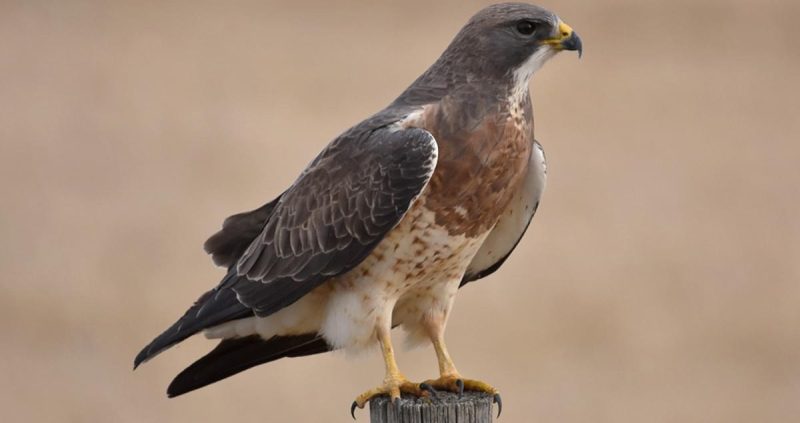
Swainson’s Hawk is a slender, long-winged raptor with pointed wingtips and a small head, often mistaken for a falcon in flight. Adults range from 18 to 22 inches long and have a wingspan of up to 54 inches. Their plumage varies, but most have a pale belly, a dark reddish breast band, and dark flight feathers contrasted with lighter wing linings. The tail is grayish with narrow bands.
This hawk is a rare visitor in Connecticut, mainly during fall migration, and sightings are uncommon but growing due to shifting migration patterns. Swainson’s Hawks breed in the western U.S. and migrate long distances to South America for the winter—one of the longest migrations among raptors. Their appearance in Connecticut is usually brief and exciting for birders.
They feed on insects like grasshoppers and dragonflies during migration, and small mammals like ground squirrels when nesting. Swainson’s Hawks are highly social during migration and can be seen soaring in large flocks. Their nests are built in trees or shrubs on open plains, and females typically lay 2 to 3 eggs.
Fun fact: Swainson’s Hawk is sometimes called the “Grasshopper Hawk” due to its insect-rich diet during migration. In Connecticut, the best chance of spotting one is during hawk watches in autumn, especially in the western part of the state.
Northern Harrier (Circus hudsonius)

The Northern Harrier is a slim, long-winged hawk that flies with its wings held in a shallow “V” shape, gliding low over marshes and grasslands. Adults measure 18 to 20 inches long with a wingspan of 40 to 46 inches. Males are pale gray above with black wingtips and a white underside, while females and juveniles are brown with streaked underparts. Both sexes have a distinctive white rump patch that’s visible in flight.
Harriers are unique among hawks in that they rely heavily on both sight and sound to detect prey, aided by their owl-like facial disk. They often fly low and silently over open ground, listening for small mammals such as voles, mice, and birds. Northern Harriers prefer open habitats like marshes, grasslands, and coastal plains, making Connecticut’s salt marshes and inland meadows perfect hunting grounds in fall and winter.
Unlike most hawks, Northern Harriers nest on the ground, typically in dense vegetation like reeds or tall grass. The female builds the nest and incubates the eggs, while the male provides food. A typical clutch contains 4 to 6 eggs, and the young fledge about a month after hatching.
Fun fact: Northern Harriers are one of the few raptors in North America that exhibit sexual dimorphism—males and females look distinctly different in color. In Connecticut, they are most often seen between October and March, especially along the coastline and in large fields.
Cooper’s Hawk (Accipiter cooperii)
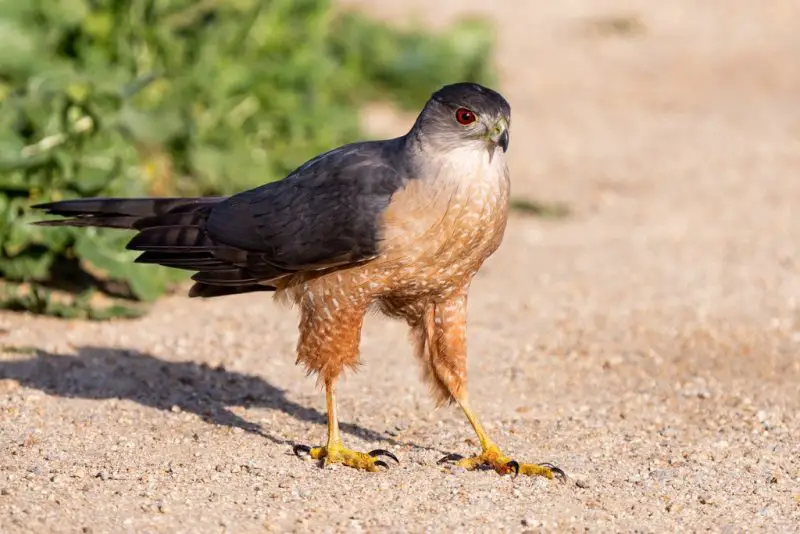
Cooper’s Hawk is a medium-sized forest hawk known for its agility and fierce hunting style. Adults have bluish-gray upperparts, reddish-barred chests, and a long, rounded tail with dark bands. They measure 14 to 20 inches in length with a wingspan of 24 to 35 inches. Juveniles are brown with streaky underparts and yellow eyes that darken with age.
These hawks specialize in ambush hunting, using dense forest or backyard foliage to surprise their prey, which often includes songbirds, doves, and small mammals. They are fast, maneuverable fliers and can dart through trees with impressive precision. Cooper’s Hawks are often seen near bird feeders where they hunt unsuspecting birds.
They build large stick nests in tall trees, sometimes reusing the same site year after year. A pair typically raises 3 to 5 chicks, and the female performs most of the incubation while the male hunts for food. The young fledge after about 4 to 5 weeks.
Fun fact: Cooper’s Hawks were once in decline due to DDT pesticide use but have since rebounded and are now common in suburban and urban areas. In Connecticut, they can be seen year-round, including in city parks, wooded neighborhoods, and forest edges.
Sharp-shinned Hawk (Accipiter striatus)
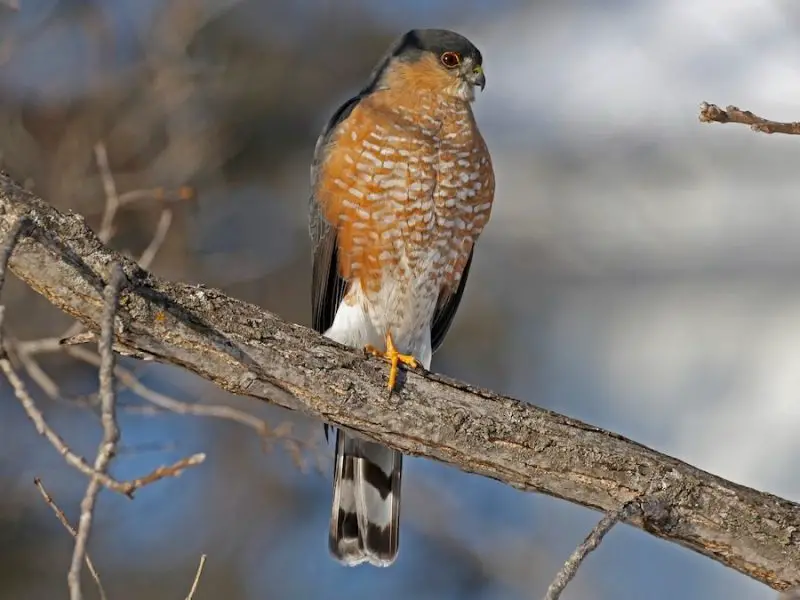
The Sharp-shinned Hawk is the smallest hawk in North America, known for its compact size and stealthy hunting. Adults have a slate-gray back, reddish-barred underparts, and a square-tipped tail. They typically measure 9 to 13 inches long with a wingspan of 17 to 22 inches. Juveniles are brown with vertical streaks on the breast.
Like their larger cousin, the Cooper’s Hawk, Sharp-shinned Hawks are skilled at navigating dense forest in pursuit of birds, especially sparrows and finches. They often launch surprise attacks from cover, flying low and fast. They are most commonly seen during fall and spring migration in Connecticut, though some may overwinter.
These hawks nest in dense coniferous forests, often building their nests on horizontal limbs close to the trunk. A typical clutch contains 4 to 5 eggs. The female incubates while the male brings food, and the young fledge in about a month.
Fun fact: Despite their fierce hunting style, Sharp-shinned Hawks are vulnerable to predation themselves, especially from larger hawks like Cooper’s. In Connecticut, they are best spotted in migration hotspots and occasionally in winter, especially in wooded backyards.
Northern Goshawk (Accipiter atricapillus)

The Northern Goshawk is a powerful forest hawk and the largest of the North American accipiters. Adults are slate-gray with fine, light barring on the chest, a bold white eyebrow, and piercing red eyes. They measure 20 to 26 inches long with a wingspan of 40 to 46 inches. Juveniles are brown with bold streaking and yellow eyes.
This elusive raptor is a formidable predator that hunts a wide range of birds and mammals, including grouse, rabbits, and squirrels. It uses surprise and speed, often flying through dense trees with unmatched agility. Goshawks are secretive and prefer mature forests, which makes sightings in Connecticut rare and exciting.
Nesting usually occurs high in conifer trees in remote woodlands. Goshawks are fiercely territorial and will aggressively defend their nest. A typical clutch contains 2 to 4 eggs, with both parents participating in raising the young. Breeding occurs in northern forests, and in Connecticut, they are mostly seen during irruptive winters when northern populations move south.
Fun fact: Northern Goshawks are known for their fierce reputation; even researchers studying nests must wear protective gear to avoid attacks. In Connecticut, they are seen infrequently during winter, mostly in the northern and more forested areas of the state.
Mississippi Kite (Ictinia mississippiensis)
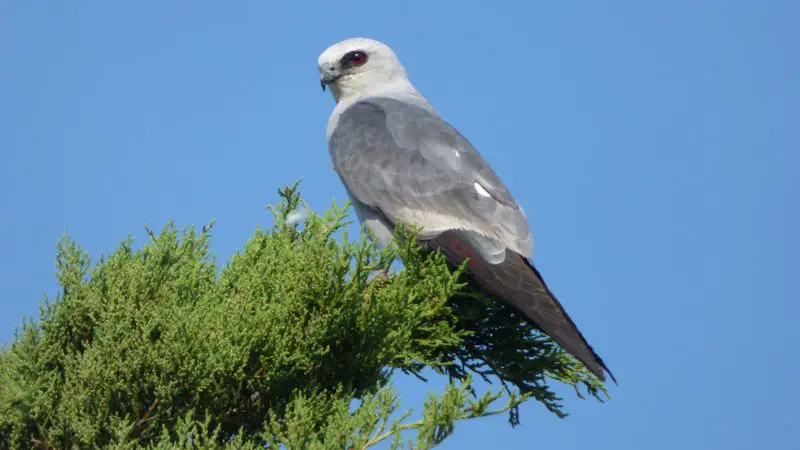
The Mississippi Kite is a graceful and slender raptor with long pointed wings and a light gray body. Adults have pale gray heads, darker gray wings, and black tail feathers. They are medium-sized hawks, measuring 12 to 15 inches long with a wingspan of 36 inches. Their flight is buoyant and elegant, often compared to a tern or swallow.
Though primarily a bird of the southeastern United States, Mississippi Kites are rare but increasingly recorded in the Northeast, including Connecticut. Most sightings occur during migration, especially in late spring and early fall. They are most likely to appear in open country, woodland edges, and near rivers or agricultural areas.
Mississippi Kites feed mostly on large insects like cicadas, grasshoppers, and dragonflies, which they snatch midair with stunning precision. They also eat small birds, reptiles, and amphibians. These hawks build nests high in trees, usually near water, and typically raise 1 to 2 chicks per season.
Fun fact: Mississippi Kites sometimes nest in small groups and are known to tolerate humans more than most raptors. In Connecticut, spotting one is a treat for experienced birders, often requiring patience and a bit of luck during migration peaks.
White-tailed Kite (Elanus leucurus)
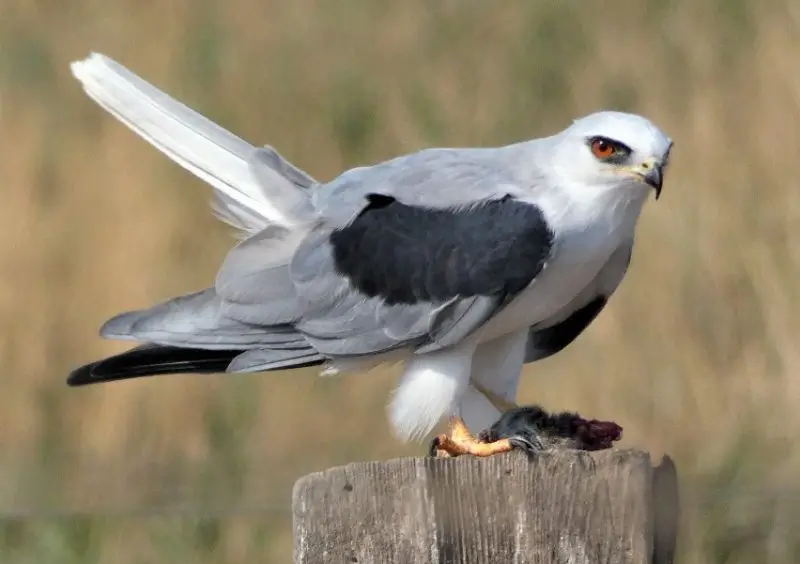
The White-tailed Kite is a striking raptor with snow-white underparts, a pale gray back, black shoulders, and brilliant red eyes. True to its name, it has a white tail and a graceful, buoyant flight style. Measuring about 14 to 17 inches in length with a wingspan of 35 to 40 inches, this kite resembles a large tern when gliding over open fields.
Though primarily found in the western and southern United States, the White-tailed Kite is an extremely rare visitor to Connecticut. Sightings are sporadic and usually occur during unusual migration events or post-breeding dispersal. When it does appear, it favors open grasslands, marshes, and agricultural fields—habitats where it can hunt effectively.
This species feeds mainly on small mammals like voles and mice, which it locates while hovering mid-air in a characteristic “kiting” behavior. It also eats small birds, insects, and reptiles when available. White-tailed Kites nest in trees or tall shrubs, often returning to the same territories if conditions are suitable, with clutches typically containing 3 to 5 eggs.
Fun fact: The White-tailed Kite’s graceful hunting style—hovering motionless in place before diving on prey—is the reason for its name. While exceptionally rare in Connecticut, occasional records spark excitement among birdwatchers hoping to catch a glimpse of this elegant aerial hunter.
Harris’s Hawk (Parabuteo unicinctus)
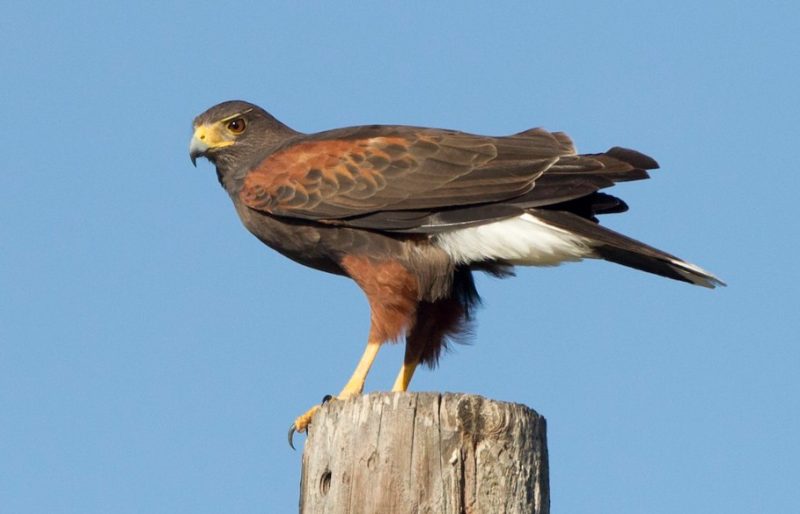
The Harris’s Hawk is a unique raptor known for its dark chocolate-brown body, chestnut shoulders and thighs, and bold white markings on the rump and tail tip. This medium-to-large hawk measures 18 to 24 inches in length with a wingspan of 40 to 48 inches. Its long legs and alert posture give it a distinctive silhouette when perched.
Harris’s Hawks are native to the southwestern United States, Central, and South America. In Connecticut, they are extremely rare, with most sightings believed to be escaped or released birds from falconry or captivity. However, some records are compelling enough to include this species on the state’s radar, especially near open fields or suburban edges.
Unlike most raptors, Harris’s Hawks are social and hunt in cooperative groups, often working together to flush and chase down prey. Their diet includes rabbits, rodents, birds, and reptiles. They nest in trees or cacti in their native range, laying 2 to 4 eggs per season. Nesting in Connecticut has not been recorded.
Fun fact: Harris’s Hawks are the only raptor in North America known to hunt in packs, similar to wolves. Even though they’re not native to Connecticut, their occasional appearance, combined with their social behavior, makes them a fascinating species for bird enthusiasts to learn about.
FAQs about Hawks in Connecticut
What types of hawks are commonly seen in Connecticut?
Connecticut is home to a variety of hawks, both year-round residents and seasonal migrants. Common species include the Red-tailed Hawk, Red-shouldered Hawk, Broad-winged Hawk, and Cooper’s Hawk. During migration and winter, species like the Rough-legged Hawk, Sharp-shinned Hawk, and Northern Harrier also become more visible. Rare visitors such as the Swainson’s Hawk and Mississippi Kite are occasionally spotted.
When is the best time to see hawks in Connecticut?
Hawks can be seen throughout the year in Connecticut, but the best viewing times are during spring and fall migrations. These occur primarily from late March to early May and again from mid-September through October. During these periods, hawks often pass through in large numbers, especially at hawk watch sites like Lighthouse Point Park in New Haven.
Where can I go hawk watching in Connecticut?
Top hawk-watching spots in Connecticut include Lighthouse Point Park (New Haven), Quaker Ridge Hawk Watch (Greenwich Audubon), and Booth Hill (Trumbull). These elevated areas provide clear views of migrating raptors as they follow ridge lines and thermal currents.
Do hawks stay in Connecticut year-round?
Yes, several species—including the Red-tailed Hawk and Cooper’s Hawk—are permanent residents of Connecticut. These hawks can be seen in forests, fields, and even urban areas throughout the year. Others, like the Broad-winged Hawk and Rough-legged Hawk, are seasonal and only present during migration or winter.
What do hawks eat in Connecticut?
Hawks in Connecticut feed on a variety of prey depending on the species. Common food items include rodents, rabbits, squirrels, small birds, reptiles, amphibians, and insects. For example, Red-tailed Hawks hunt small mammals, while Sharp-shinned and Cooper’s Hawks specialize in catching birds near feeders.
Can hawks be seen in residential areas or cities?
Yes, hawks like the Cooper’s Hawk and Red-tailed Hawk have adapted well to suburban and urban environments. They often nest in city parks, wooded neighborhoods, and even on buildings. Bird feeders may attract their prey, making hawks more visible in backyards during winter.
Are any hawks in Connecticut considered rare or endangered?
Most hawks in Connecticut are not endangered, but some are rare visitors. Species like the Swainson’s Hawk, White-tailed Kite, and Harris’s Hawk are considered accidental or vagrant. The Northern Goshawk, while not endangered, is elusive and declining in many parts of its range, making sightings uncommon.
How can I tell the difference between similar hawk species?
Identification can be tricky, especially with look-alike species such as Cooper’s Hawk and Sharp-shinned Hawk. Key differences include size, tail shape, and flight style. Field guides, birding apps, and practice with binoculars can help sharpen your skills. Observing behavior and habitat also provides useful clues.
Do hawks pose a threat to pets or backyard animals?
While hawks occasionally prey on small animals, it’s rare for them to target pets. Most Connecticut hawks prefer wild prey such as rodents and birds. However, it’s wise to supervise very small pets when they’re outside, especially in areas with active raptor populations.
How can I help protect hawks in Connecticut?
You can support hawk conservation by preserving natural habitats, avoiding pesticides, supporting bird-friendly landscaping, and reporting sightings of rare species to local birding groups. Participating in hawk watch events and citizen science projects also helps researchers monitor raptor populations in the state.

